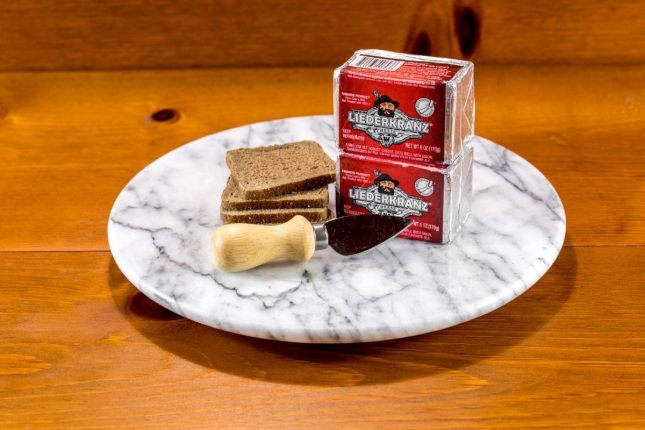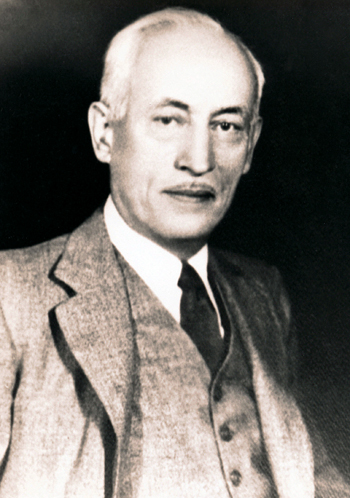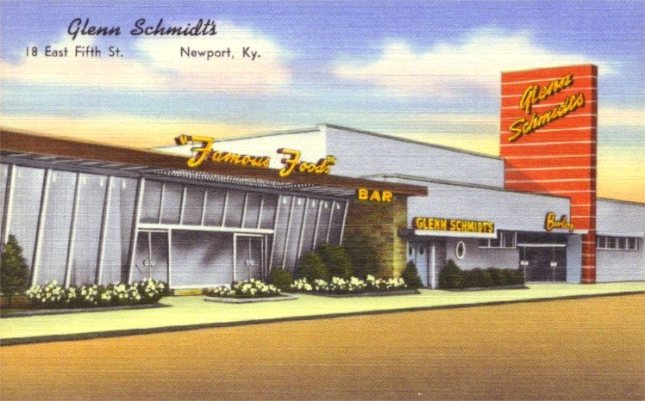
If you’ve ever been to German festival in Greater Cincinnati, you’ve probably seen a booth that offers Limburger cheese sandwiches. It’s typically sold warm between two slices of good German rye bread, with a slice of raw white onion. People of German heritage love this smelly cheese. It’s the Germanic version of Durian fruit – smells funky, tastes delicious. There’s even reference in the history of the Ohio 9th Civil War Regiment (mustered in Over-the-Rhine of German immigrants) that their suttler Frank Linck (a former brewer) brought them Limburger cheese, and their Anglo-American compatriots complained of its smell.
Back in the 1890s, importing European Limburger cheese was problematic – it often spoiled in transport, without commercial refrigeration. But in 1891, a Swiss immigrant named Emil Frey, working for the Monroe Cheese Company in New York, invented a domestic, and milder version of Limburger cheese, or what the Germanic immigrants in the Hudson Valley called Bismark Schlosskase. Frey’s father had been a dairy farmer and cheese maker in Switzerland.

Emil Frey, the Swiss immigrant who invented Liederkranz and Velveeta cheeses.
It used a slightly different bacterial culture for smear ripening than Limburger, which made it easily spreadable, with the same dirty gym socks smell. It is a cow’s milk cheese, with an edible pale yellow-orange tan crust, and a semisoft, pale interior distinct aroma that can turn unpleasantly ammonia-like if aged incorrectly. Think of Liederkranz as the Germanic version of Philly Cream Cheese, only smellier.
Liederkranz offered a domestic, creamy pungent cheese that scratched the itch for Limburger and other smelly Germanic cheeses. Germanic immigrants were delighted. Adolph Tode, the owner of the Monroe Cheese company and a New York deli, test marketed the new cheese with his friends at the New York Liederkranz, or German singing society, and they literally sang its praises. And, so as the legend goes, the company decided to name the cheese after the society.
The cheese became a huge hit and one with great ‘dis-stink-tion’ around the nation in Germanic settled areas, like Cincinnati. It was packed in small wooden boxes with vent holes, which wafted the smell out and about. Author W. H. Auden and T.S. Elliot became cult fans of the cheese. It was served locally in sandwiches and in cheese plates (what we now call charcuterie boards) at such high end places as Glenn Schmidt’s Playtorium (a notable mob hangout in Newport, Kentucky, now Jeff Ruby’s The Syndicate).

Liederkranz cheese slowly disappeared over the course of the 20th century. In the 1920s, Tode sold the Monroe Cheese company, and the business, which relocated to Van Wert, Ohio, changed hands several more times. Inspectors discovered bacterial contamination in a batch of Liederkrantz in 1985, and production ceased.
Not to be stopped by just one innovation, Emil Frey in 1918 invented another, more famous cheese that has become the American Cheese, one that is the go-to for grilled cheese sandwiches. It was named Velveeta to evoke its velvety texture. Frey had been tasked by the company execs to come up with a cheese that used scraps from other cheeses or damaged cheeses that couldn’t be sold. It’s brilliance is that incorporating the milk whey with the curd create a creamy, easily meltable cheese that melts without clumps. A separate company, the Velveeta Cheese Company incorporated in 1923 and took off with the brand.
In the mid-2000s, DCI Cheese Co., based in Richfield, Wisconsin, took ownership of the extinct cheese. Using cultures developed by the University of Wisconsin Center for Dairy Research, they reintroduced Liederkranz to the market in 2010. It can now be fairly easily found at Kroger and Jungle Jim’s. With commercial refrigeration and preservatives, importing cheese is effortless today, but Liederkranz remains a relic from a time when attempts to replicate the flavors of Europe led to new and delicious American delights.

